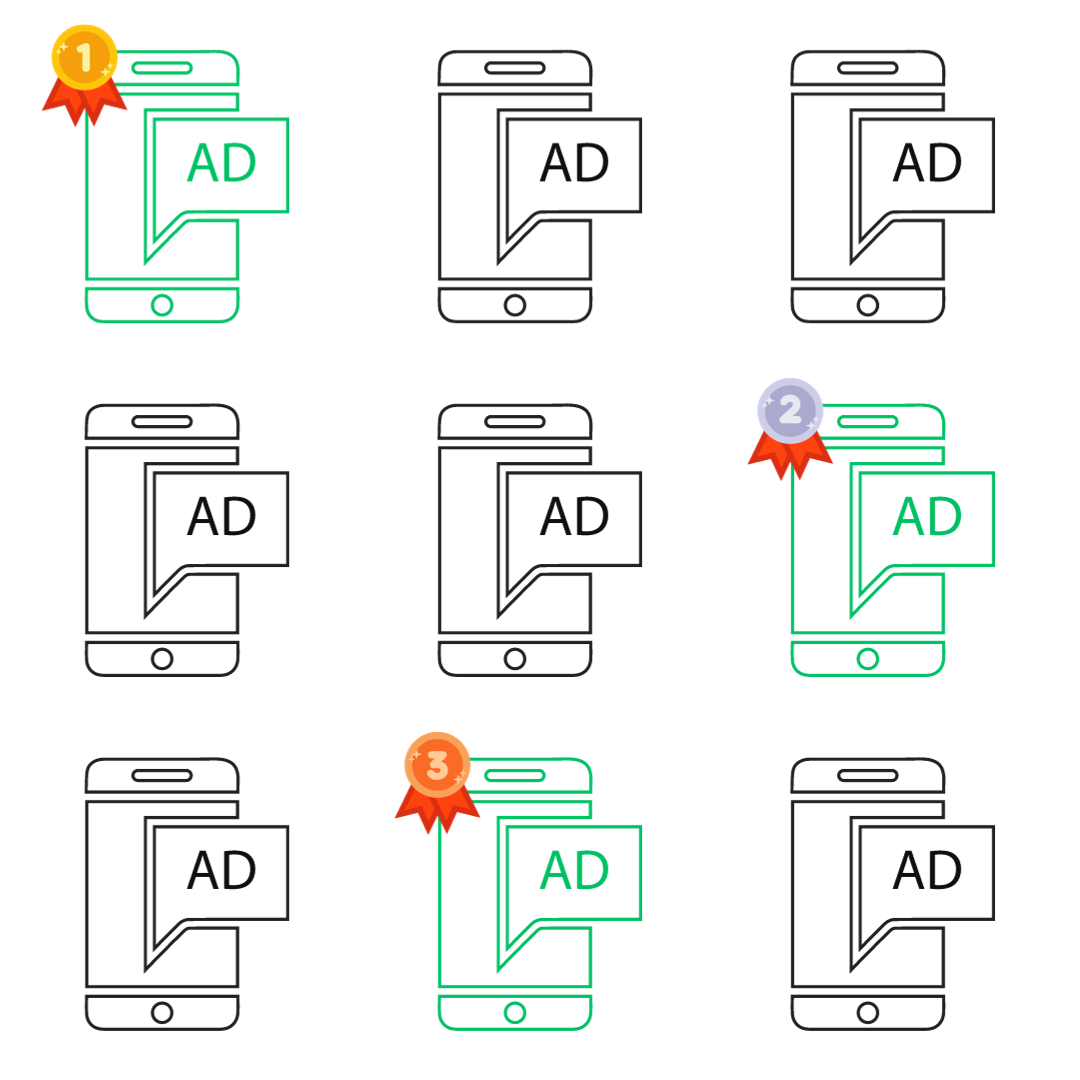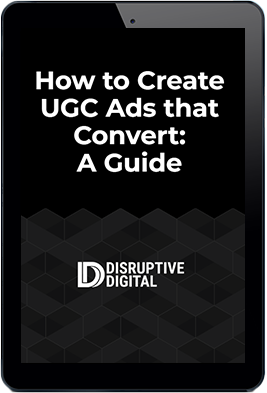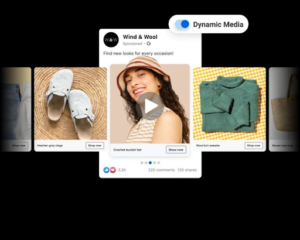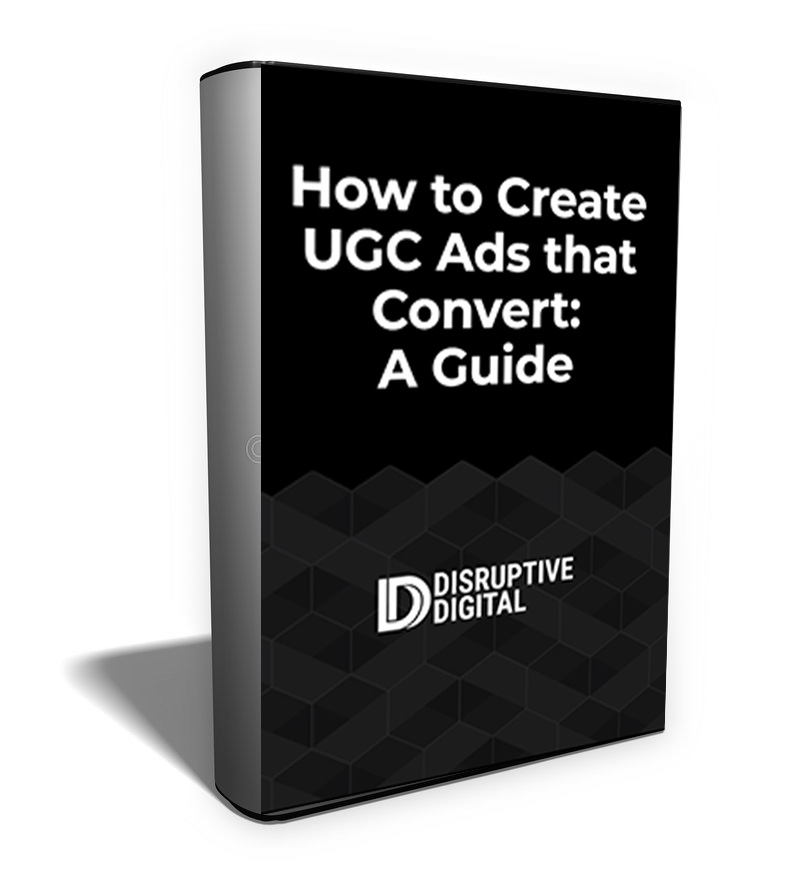Today, we’re taking a closer look at creative testing for Meta accounts, particularly those with a high conversion volume. From the outside, it looks daunting. But we’re going to break this down into easy-to-manage, actionable insights.
FREE GUIDE
How to Create UGC Ads That Convert
Our guide explains what user generated content is and what makes it good for ads.
Testing Process: A Two-Pronged Approach
Every brand, no matter its size or sector, should be thinking proactively about testing opportunities that can achieve one of two goals:
- How can I iterate on my existing ads to improve performance?
- Enhancing your current ads primarily involves remixing assets. Consider an ad that’s performing decently. Remixing breathes new life into it by tweaking the imagery, refining the copy, or modifying the call-to-action to boost performance.
- You could also produce a new series of ads inspired by a successful storyboard, effectively creating a compelling sequel to a story that already resonates with your audience.
- What net-new creative opportunities do I have to find new types of users to acquire?
- Exploring new territories with fresh content, using innovative storyboards or unique creators. It’s about expanding your reach to attract a diverse audience your brand hasn’t yet engaged.
- Rather than playing it safe, this approach embraces boldness and originality to captivate a new segment of the market. You blend core brand values and unique
FREE GUIDE
How to Create UGC Ads That Convert
Our guide explains what user generated content is and what makes it good for ads.
- The One-Size-Fits-All Approach Doesn’t Work Here
When it comes to creative testing and cadence, understand that every account has different needs depending on the brand’s requirements to find success across platforms. While small, iterative changes to existing ads can yield positive results for some brands, bold, innovative content is usually the key to unlocking new user segments.
Using different frameworks can help guide your approach. Remember, a framework isn’t a strict set of instructions. It’s flexible, adaptable, and ready to adapt along with your brand and the current digital landscape.
Advertising needs can shift over time, and it’s important to have the ability to change along with it. It’s important to keep up with performance metrics and adjust your strategy based on the insights you gather.
Understand Your Audience
How do you strike that delicate balance between staying true to your brand’s voice and venturing into new creative territories? Start by understanding your audience – their preferences, behaviors, and pain points. From there, you can begin creating messages and visuals specifically designed to resonate with them.
You should also understand the medium. Different platforms cater to different user behaviors and preferences. What works on Facebook might not necessarily work on Instagram or TikTok. Each platform has its own language and style. Your content needs to speak that language fluently.
Creative testing in high-volume Meta accounts requires a deep understanding of your audience, a keen eye for detail, and the willingness to take calculated risks. This two-pronged approach to testing opens up a world of possibilities for your brand, bringing new insights and opportunities for growth.
High Volume Accounts: The Big Leagues
- Robust Conversion Capability: A typical ad set in these accounts is swimming in conversions. We’re talking over 50 conversions per week.
- Efficient Budget Allocation: A new ad set earning its keep should require less than 20% of the overall budget to reach that golden number of 50 conversions per week.
Best Practices
- Dedicated Weekly Test Budget: To hit the 50 conversions per week threshold, you’ve need to spend at the required level to get out of learning. You can calculate the daily budget as such:
- Required Investment = (Typical In-Platform Meta CPA * 50)/7
- For example, if you’re typical in-platform CPA is $20, your recommended daily budget would be ($20*50)/7 = $142.86 per day
- Limit Testing Frequency: You want to keep your testing frequency tight and focused. This involves combining your separate campaigns and not using retargeting audiences. Keep your testing frequency clean and straightforward. A weekly testing cadence is recommended. But if you’re crushing those conversion numbers daily, feel free to do more.
- Recommended Number of Assets to Test: Stick to testing three to six new creatives per round. Why? Because the delivery system favors ads with more delivery, meaning your conversion predictions are sharper and more accurate. Once you go beyond six ads, the benefits start to taper off.
Test a Variety of Creative: Make sure you are testing newly produced ideas and remixing existing assets that seem to be working. In other words, you should aim to not only create new content, but optimize existing content to perform better. The more diversified the content is you’re testing, the more likely you are to find new areas for scale and efficiency.
Advanced Testing Tactics
Leverage Dynamic Creative Testing (DCT)
You’ll see just how powerful Dynamic Creative Testing (DCT) is when you want to go beyond the standard three to six ads. DCT is invaluable for honing specific aspects of your ads, like headlines or post copy, ensuring they resonate perfectly with your target audience.
The process involves a sophisticated blending of different media types and ad components. DCT combines images, videos, headlines, and calls to action in different combinations, producing a variety of personalized ad experiences. It’s learning to reassemble these elements in unique ways to see what formula best appeals to different segments of your audience.
One of the most significant advantages of DCT is its scalability. You may be a tiny startup or a large enterprise, but DCT can be scaled to fit your campaign’s size and complexity. This flexibility means you can run extensive, multifaceted tests without overwhelming your team or your budget.
DCT excels in creating tailored experiences for each viewer. Consumers are far more likely to engage with content that feels specifically designed just for them. DCT allows you to achieve this by generating variations of your ad that speak directly to diverse individual preferences and behaviors. Each viewer gets a version of the ad that is most likely to appeal to them, significantly increasing the chances of engagement and conversion.
Recommended Testing Calendar

Consistency and variation – that’s the mantra for your testing calendar. Alternate between net-new creative and remixed assets:
- Week 1: Test 3-6 completely net-new ads from production. These can be inspired by fresh ideas or lessons from past campaigns. This period is all about being innovative and creative to attract new types of customers.
- Week 2: Based on prior learnings, switch to testing remixes of your top performing ads that have worked well before. Try out 3-6 different versions of these ads, making changes only in post production to make them even better.
- Week 3: Go back to testing net-new produced ad concepts. Bring in 3-6 new ads that reflect wholly new ideas or target a completely new audience based on what what you’ve learned about your audience.
- Week 4: Once again, focus on optimizing ads in post-production that are already successful. Use the insights gained over the past three weeks to tweak and improve 3-6 of these ads further.
In the high-volume account league, it’s all about understanding the perfect moments to venture into new creative territories and recognizing when to refine and enhance what’s already proving successful. It involves carefully navigating the dynamic interplay between experimenting with fresh ideas and fine-tuning the tried and true methods for optimal results.
Remember, the digital landscape is constantly shifting and evolving, and so should your strategies. Keep a close eye on your performance metrics, be ready to make adjustments when needed, and never stop testing. After all, in the world of high-volume Meta accounts, the only constant is change. So, embrace it, learn from it, and let it propel you to new heights of digital marketing success.









